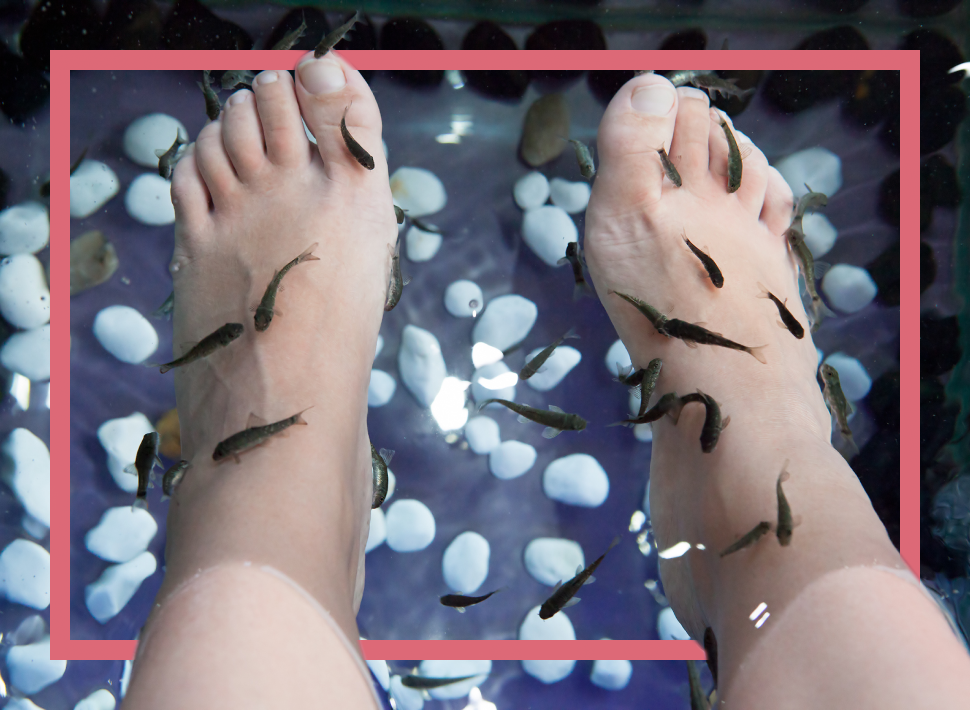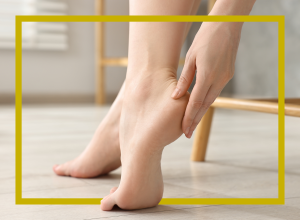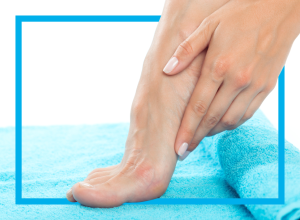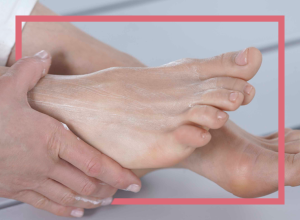Rough and dry patches on the feet are a familiar problem for many people, especially in summer when open shoes are once again part of everyday life. But what is the best tool for gently removing calluses? Pumice stone, rasp or the now familiar nibbling fish? We take a look at the differences, advantages and special features of the various methods and show you what really matters when it comes to care.
Why do calluses develop?
Calluses are a natural protective mechanism of the body. It forms where the skin is regularly exposed to pressure or friction in order to protect the tissue. This happens most frequently
Pumice stone – the classic from nature
Pumice stone is a porous, lightweight volcanic rock with a sponge-like structure that is formed during the cooling of lava. Its fine surface makes it particularly suitable for more sensitive skin areas and for mild to moderate callus formation. This is why it has been used for centuries to remove calluses. It is important to always use it on damp skin, for example after a warm foot bath, and to clean it regularly to prevent germs from settling. When broken down correctly, pumice stone is also very environmentally friendly due to its natural formation and complete recyclability.
Advantages:
- Gentle and skin-friendly removal with regular use
- Ideal for daily foot care
Foot rasp – powerful against thicker calluses
The pumice stone may not be effective enough for people with thicker or more callused skin. In this case, a foot rasp is often used. This is a single or double-sided grater that is attached to a handle. It is usually made of stainless steel, ceramic or plastic and has a
However, caution is advised: There is an increased risk of injury if applied incorrectly – for example, through small skin tears or abrasions. Too much pressure or too frequent application can also irritate the skin. The skin should therefore always be softened well before application.
Important: Due to the increased risk of injury, the foot rasp is not suitable for people with diabetes, as even minor skin injuries can have serious consequences.
Advantages:
- Effective for severe keratinization
- Different grain sizes for individual requirements
Nibbling fish – unusual, but not for everyone
Nibbling fish, also known as reddish suckermouth barbs or “Garra Rufa”, are small fish that nibble dead skin cells from the feet. This method originated in Asia and is mainly offered in spa facilities. For many users, fish pedicures have a
They are also controversial from a hygiene and animal welfare point of view. Various harmful bacteria can be transferred to the water and grow on the fish’s mucous membranes. In most cases, this is not a problem for healthy people, but people with weakened immune systems or pre-existing conditions should at least avoid public fish pedicures. Furthermore, the keeping of fish is considered by many to be cruelty to animals and its popularity leads to overfishing of the species and pollution of the environment. For this reason, the use, catch and export of fish is prohibited in many places.
Advantages:
- Gentle removal of dead skin
- Pleasant feeling during application
The right care after removal
No matter which product you choose: The subsequent care is important for a long-lasting effect. After removing the callus, the skin is particularly receptive to moisturizing products such as
Above all, the microalgae active ingredient spiralin is particularly beneficial. This natural active ingredient, obtained from an ancient type of algae, supports the skin barrier, protects against external influences and helps to maintain the skin’s natural balance.
Conclusion: Removing calluses – gently, effectively … and with care
Whether pumice stone, rasp or nibbler: each method has its advantages and disadvantages. It is important to pay attention to the individual needs of your skin and to integrate the application regularly but carefully into your foot care routine. Supported by skin-friendly care products with natural ingredients, the skin on your feet can be kept supple easily and sustainably.
We have compiled further care tips for you here.
FAQ
Which tool is the gentlest against calluses?
Pumice stone or a fine foot file work most gently on dry to slightly damp skin. Make short, even strokes without applying pressure and check the progress regularly – preferably a little, but more often. Afterwards, apply a skin-friendly care product with natural ingredients.
Why are blades/planes critical for callus removal?
Sharp instruments increase the risk of cuts, microcracks and the entry of germs. In addition, too aggressive removal can overstimulate the skin – the body reacts with increased keratinization (“rebound”). The result: smooth in the short term, but often more calluses and a higher risk of fissures in the long term.
Are “nibble fish” recommended?
Nibbling fish has a pleasant and beneficial effect. However, such applications are difficult to control in terms of hygiene: water is shared, the animals cannot be disinfected and small skin lesions can be entry points for germs. It is better to use easy-to-clean, disinfectable tools such as a pumice stone or file to keep the process and cleanliness under control.
Experten-Tipp entstand in Zusammenarbeit mit:
Patrick Günther
Patrick Günther completed his pharmacy studies in Hamburg and, after obtaining his licence to practise, worked for several years in marketing and sales in the pharmaceutical industry. In 2003, he took over ocean pharma, the company founded by his father in Reinbek near Hamburg in 1978. Together with his business partner, he patented the important processing and standardisation process for the microalgae active ingredient Spiralin® and developed a wide range of medical cosmetics and foot care products based on Spiralin®.







